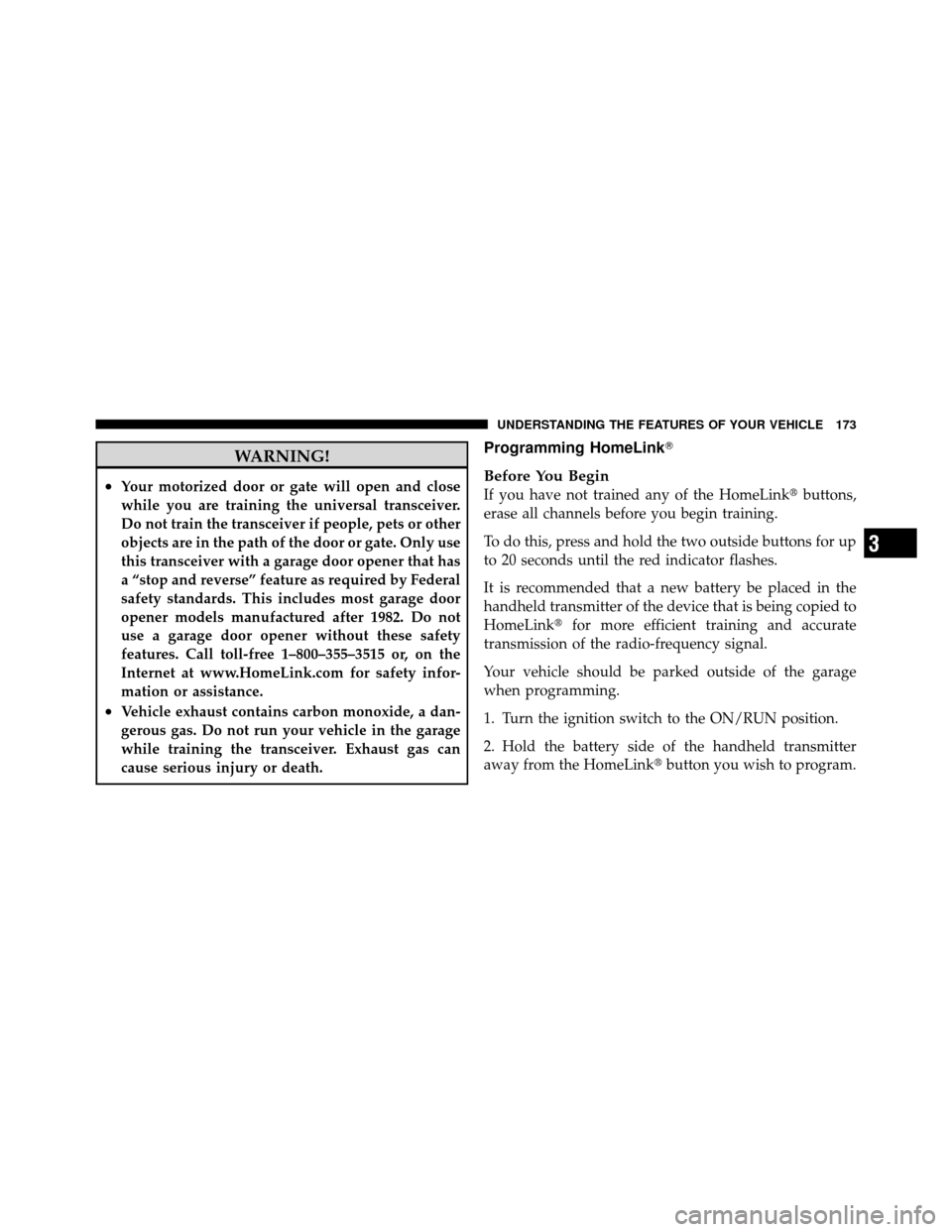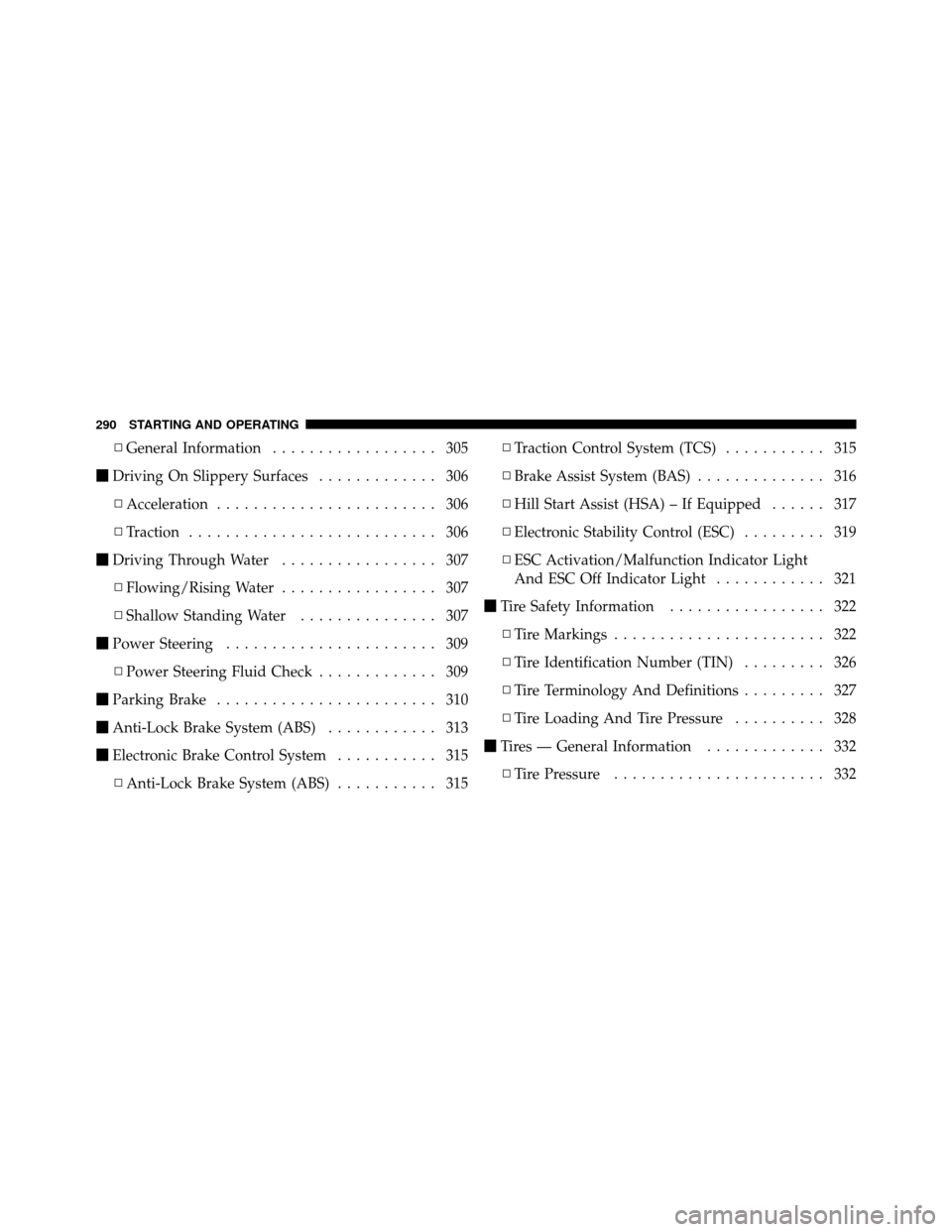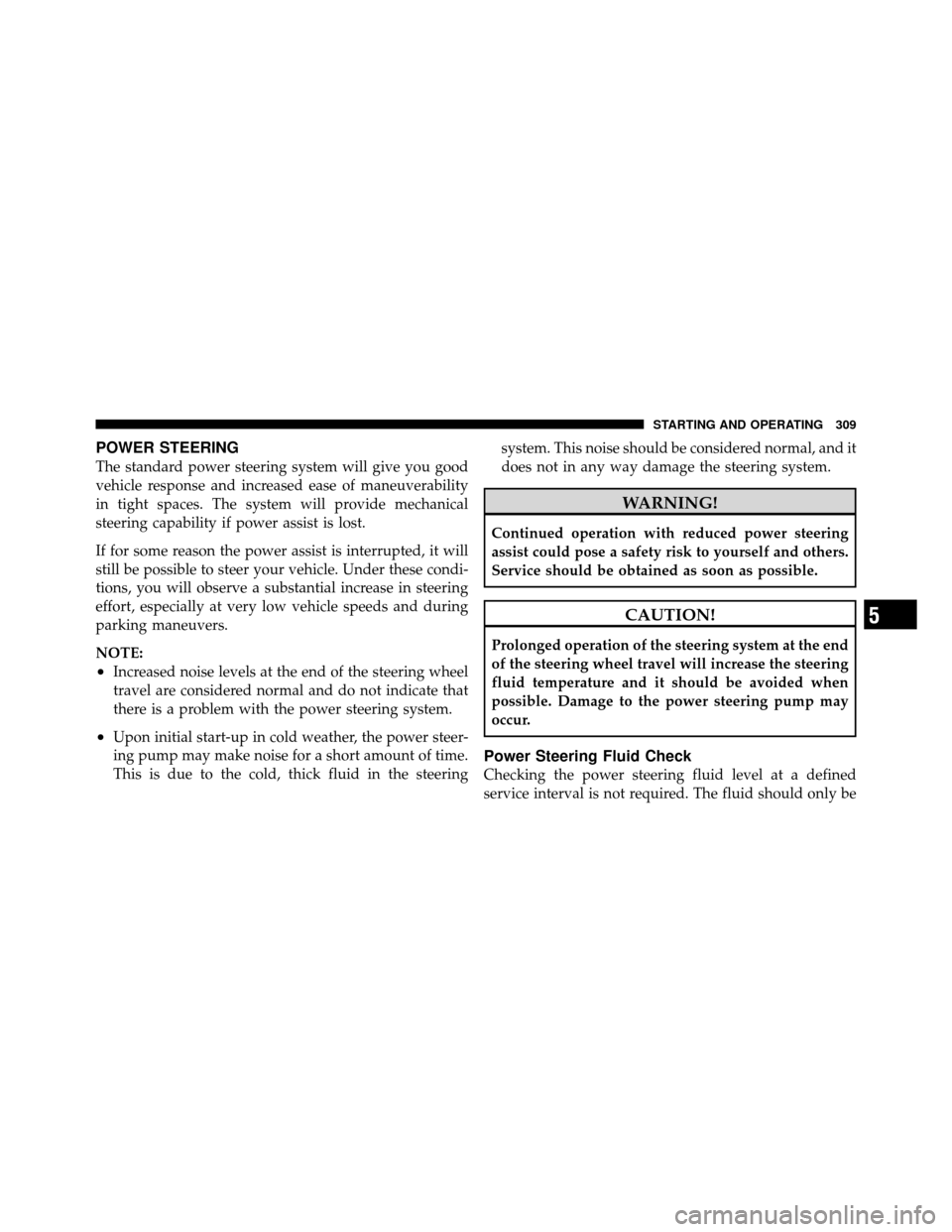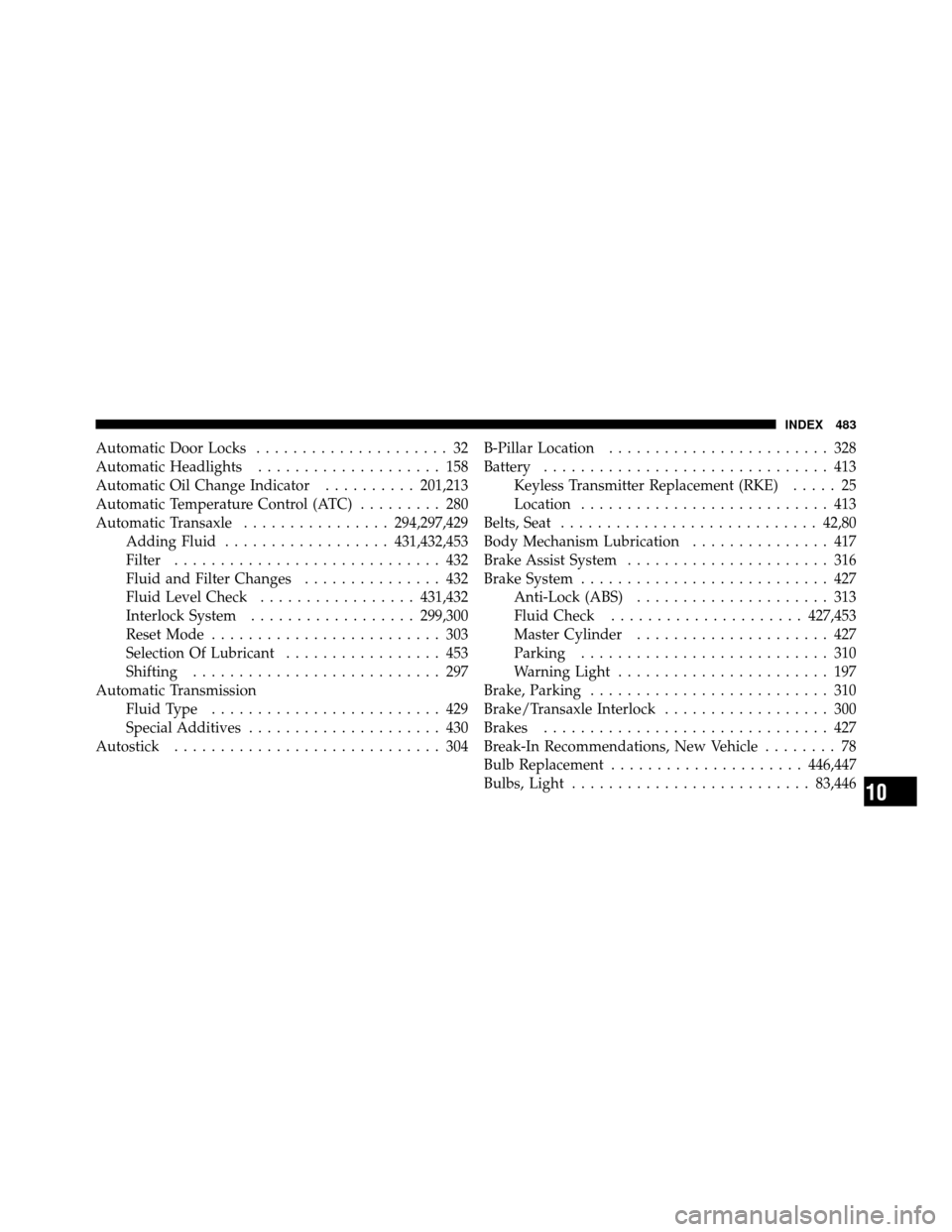Page 175 of 505

WARNING!
•Your motorized door or gate will open and close
while you are training the universal transceiver.
Do not train the transceiver if people, pets or other
objects are in the path of the door or gate. Only use
this transceiver with a garage door opener that has
a “stop and reverse” feature as required by Federal
safety standards. This includes most garage door
opener models manufactured after 1982. Do not
use a garage door opener without these safety
features. Call toll-free 1–800–355–3515 or, on the
Internet at www.HomeLink.com for safety infor-
mation or assistance.
•Vehicle exhaust contains carbon monoxide, a dan-
gerous gas. Do not run your vehicle in the garage
while training the transceiver. Exhaust gas can
cause serious injury or death.
Programming HomeLink�
Before You Begin
If you have not trained any of the HomeLink�buttons,
erase all channels before you begin training.
To do this, press and hold the two outside buttons for up
to 20 seconds until the red indicator flashes.
It is recommended that a new battery be placed in the
handheld transmitter of the device that is being copied to
HomeLink� for more efficient training and accurate
transmission of the radio-frequency signal.
Your vehicle should be parked outside of the garage
when programming.
1. Turn the ignition switch to the ON/RUN position.
2. Hold the battery side of the handheld transmitter
away from the HomeLink� button you wish to program.
3
UNDERSTANDING THE FEATURES OF YOUR VEHICLE 173
Page 292 of 505

▫General Information .................. 305
� Driving On Slippery Surfaces ............. 306
▫ Acceleration ........................ 306
▫ Traction ........................... 306
� Driving Through Water ................. 307
▫ Flowing/Rising Water ................. 307
▫ Shallow Standing Water ............... 307
� Power Steering ....................... 309
▫ Power Steering Fluid Check ............. 309
� Parking Brake ........................ 310
� Anti-Lock Brake System (ABS) ............ 313
� Electronic Brake Control System ........... 315
▫ Anti-Lock Brake System (ABS) ........... 315▫
Traction Control System (TCS) ........... 315
▫ Brake Assist System (BAS) .............. 316
▫ Hill Start Assist (HSA) – If Equipped ...... 317
▫ Electronic Stability Control (ESC) ......... 319
▫ ESC Activation/Malfunction Indicator Light
And ESC Off Indicator Light ............ 321
� Tire Safety Information ................. 322
▫ Tire Markings ....................... 322
▫ Tire Identification Number (TIN) ......... 326
▫ Tire Terminology And Definitions ......... 327
▫ Tire Loading And Tire Pressure .......... 328
� Tires — General Information ............. 332
▫ Tire Pressure ....................... 332
290 STARTING AND OPERATING
Page 311 of 505

POWER STEERING
The standard power steering system will give you good
vehicle response and increased ease of maneuverability
in tight spaces. The system will provide mechanical
steering capability if power assist is lost.
If for some reason the power assist is interrupted, it will
still be possible to steer your vehicle. Under these condi-
tions, you will observe a substantial increase in steering
effort, especially at very low vehicle speeds and during
parking maneuvers.
NOTE:
•Increased noise levels at the end of the steering wheel
travel are considered normal and do not indicate that
there is a problem with the power steering system.
•Upon initial start-up in cold weather, the power steer-
ing pump may make noise for a short amount of time.
This is due to the cold, thick fluid in the steeringsystem. This noise should be considered normal, and it
does not in any way damage the steering system.
WARNING!
Continued operation with reduced power steering
assist could pose a safety risk to yourself and others.
Service should be obtained as soon as possible.
CAUTION!
Prolonged operation of the steering system at the end
of the steering wheel travel will increase the steering
fluid temperature and it should be avoided when
possible. Damage to the power steering pump may
occur.
Power Steering Fluid Check
Checking the power steering fluid level at a defined
service interval is not required. The fluid should only be
5
STARTING AND OPERATING 309
Page 485 of 505

Automatic Door Locks..................... 32
Automatic Headlights .................... 158
Automatic Oil Change Indicator ..........201,213
Automatic Temperature Control (ATC) ......... 280
Automatic Transaxle ................ 294,297,429
Adding Fluid .................. 431,432,453
Filter ............................. 432
Fluid and Filter Changes ............... 432
Fluid Level Check ................. 431,432
Interlock System .................. 299,300
Reset Mode ......................... 303
Selection Of Lubricant ................. 453
Shifting ........................... 297
Automatic Transmission Fluid Type ......................... 429
Special Additives ..................... 430
Autostick ............................. 304 B-Pillar Location
........................ 328
Battery ............................... 413
Keyless Transmitter Replacement (RKE) ..... 25
Location ........................... 413
Belts, Seat ............................ 42,80
Body Mechanism Lubrication ............... 417
Brake Assist System ...................... 316
Brake System ........................... 427
Anti-Lock (ABS) ..................... 313
Fluid Check ..................... 427,453
Master Cylinder ..................... 427
Parking ........................... 310
Warning Light ....................... 197
Brake, Parking .......................... 310
Brake/Transaxle Interlock .................. 300
Brakes ............................... 427
Break-In Recommendations, New Vehicle ........ 78
Bulb Replacement ..................... 446,447
Bulbs, Light .......................... 83,446
10
INDEX 483